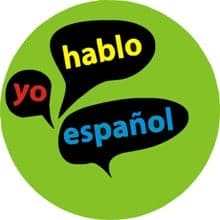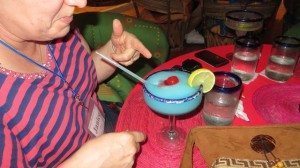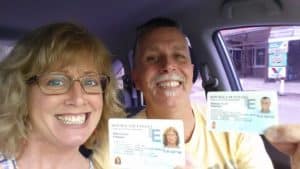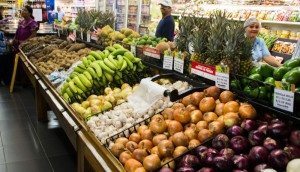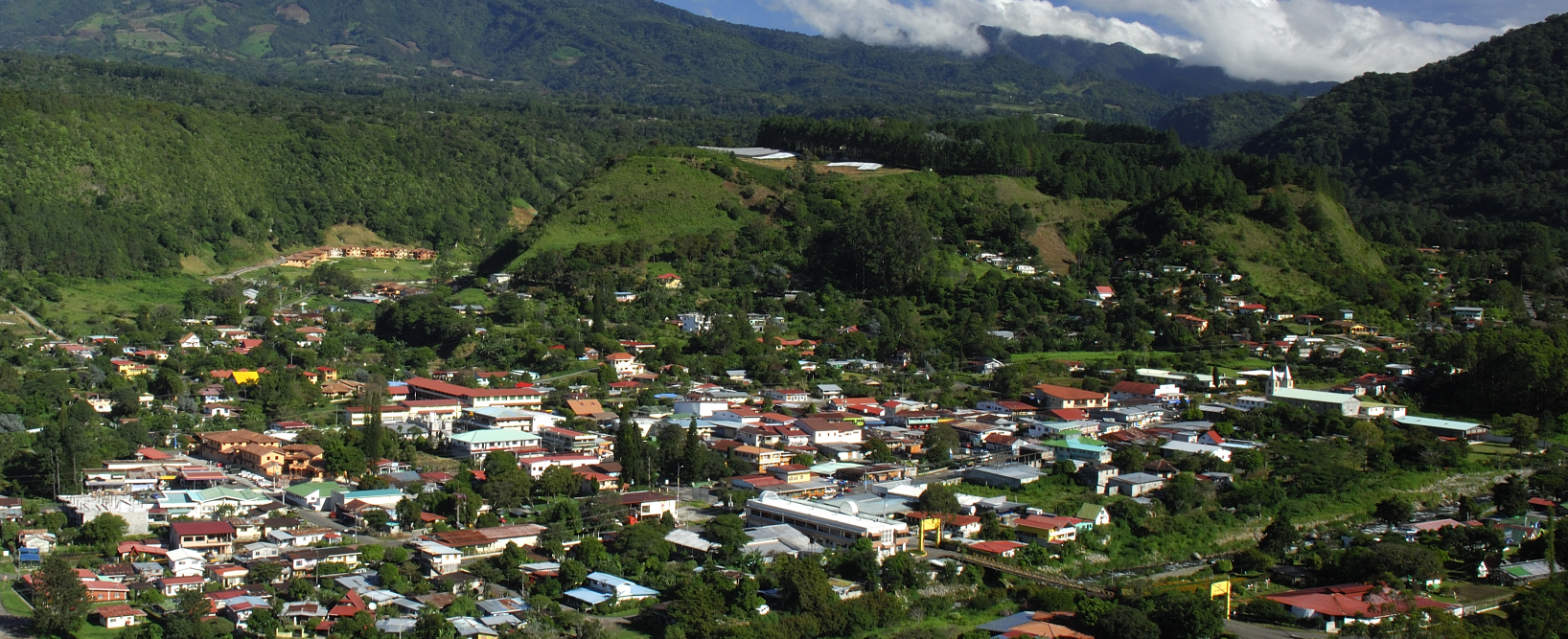One of the biggest concerns people have about relocating to Panama is not knowing Spanish. Don’t let the lack of understanding Spanish stop you from enjoying a more stress-free and affordable life in Panama. There are places where you can live in Panama and do just fine with very limited (or no) Spanish.
Some areas of Panama have a higher concentration of expats who speak English. In these areas, more Panamanians speak English, so it is easier for some to begin, at least initially, in an area with many expats, as this will facilitate their transition to life in Panama. In the expat communities, you’ll find that some restaurant menus are in Spanish and English, people at the bank speak English, doctors speak English, and even signs at the grocery store are in Spanish and English. In expat communities, there will always be someone nearby who is bilingual and can assist with translations if necessary.
However, even in expat communities, it is beneficial to learn basic Spanish phrases. You’ll find that the more you are around Spanish speakers, the more Spanish you will understand!
If you move to an area with few tourists or expats, there will be only a few (if any) Panamanians who speak English because they have not been exposed to, or had the need to know, the Language. In these areas, you’ll need to learn more Spanish more quickly. Keep reading to learn how!
You moved to Panama and are settling into your first rental. You are unpacking, you are walking around your town and finding out where the grocery stores are, where the restaurants are, and most importantly, where the closest place is where you can sit down and order an ice-cold beer (or margarita). There will likely be several places like this, and there will be other expats you can speak with.
Learning Spanish is a high priority, but first things first. Your suitcases need to be unpacked, and you must buy food to put in the refrigerator so you can cook something this week! When you move to Panama, Spanish is the official language, which could present some new challenges – but they are easy to overcome!
With that in mind, these are some basic things you will need to know to communicate and function in Panama that first month. The first chart has a few words and basic phrases that will make your first month in Panama easier.
If Panamanians see you trying to speak even a little Spanish (even if you butcher it) and you have a big smile, they will do everything they can to help you communicate. They sincerely appreciate your efforts.
THE FAST TRACK TO SPEAKING AND UNDERSTANDING SPANISH
To begin learning Spanish and become more comfortable with speaking and listening, use DOULINGO. It’s a FREE Online App. They also offer a paid version that you can subscribe to later, when you are ready to advance.
HOW TO BE POLITE IN PANAMA!
Panamanians are some of the friendliest people you’ll ever meet. In their culture, politeness is highly important. When you enter an elevator, make eye contact and greet everyone by saying “Hola” or “Buenas”. The same applies when you enter a doctor’s office or board a bus.
Even when walking down the street, it is customary to make eye contact and greet people you pass. There is a way to say “Good Morning, Good Afternoon, and Good Night,” but if you learn the word “Buenas,” it covers the entire day. Buenas is much easier to learn at the very beginning. Your brain is absorbing so much in your new home; these charts are just to get you started!
Good Morning, Good Afternoon, Good Night — Buenas
Thank you- Gracias
You’re welcome – De Nada
How are you? Como Esta?
Have a good day (or good day) tenga un buen día or just Buen día
Please – (you will use this often) Por Favor!
It’s nice to meet you! mucho gusto!
If someone sneezes, say — salud
Goodbye — ciao
Where is the bathroom? ¿dónde está el baño?
RESTAURANT SPANISH
Here is a “cheat sheet of some basic words you might want to know when going to a restaurant. It will help you read the menu and request items you might want. Also, it is important to know that in Panama, a waiter or a waitress will never give you your check until you ask. That is considered rude in this country. They know that some families might save an entire year to take the whole family to a restaurant. Employees would never give anyone the impression that, just because they have finished their meal, they are no longer welcome. So whenever you are ready to leave the restaurant, remember to ask for the check by saying, “La Cuenta Por Favor!” If you don’t ask for your check, you may be there forever!
menu — menú
glass of water — vaso de agua
juice — jugo
alcohol — alcohol
I want a beer!Quiero una cerveza or just Cerveza por favor
beer — cerveza
ice — Hielo (sounds like yellow)
fork — tenedor
spoon — cuchara
knife — cuchillo
may I have the check please? — la cuenta por favor
chicken — pollo
fish — pescado
fried — frito
grilled — A la parrilla
soup — sopa
salad — ensalada
salad dressing — aderezo para ensalada
potatoes — papas
rice — arroz
beans — frijoles
black coffee — café negro
coffee with milk — café con leche
dessert — postre
ice cream — helado
cake — pastel
pie — tarta
cash only — solo efectivo (be sure to determine if the restaurant is cash only before you order)
please — por favor
thank you — gracias
Note that I have included “Please” and “Thank you” at the end of this chart. It’s important to ALWAYS, when you ask for something, say “Please,” and ALWAYS, when you receive something, say “THANK YOU!” You will never go wrong if you are always polite!
If necessary, you can use Google Translate on your mobile device (ensure it is installed) to translate a menu or ask a question. With Google Translate, you can even speak the words you want to translate, and you can take a photo of a Spanish menu to get it translated into English.
Enjoy your new home in Panama! The key to easing your way into Panama is to relax! Smile a lot, learn patience, be polite, and realize that life does not have to move a million miles an hour!
If you find yourself wondering whether you should try something new, adapt this phrase as your new mantra: “Como no?” (Why not?)
COMMUNICATION
During the first week in Panama, it would be advisable to obtain a Panama cell phone. If your current phone is unlocked (not in contract), you can switch to a Panama SIM card and use the same phone. A Verizon phone may not work in Panama. There are several different cell phone companies in Panama. I prefer TIGO because its service is excellent throughout Panama. You can sign up for a monthly cell phone plan (no long-term contract) for $25 to $50 a month, or you can add minutes/data as needed.
You will want to install WhatsApp (free download) on your phone because it is the primary way people make calls, send texts, and share photos or locations in Panama. When you buy a phone or a SIM card, the person at the store can help you download WhatsApp and set up your phone, so everything is in English. With WhatsApp, you’ll be able to make and receive free calls from friends and family back home who also have WhatsApp.
Having a Panama cell phone number will make it much easier for property managers and your immigration attorney to stay in touch with you. Note that Panama cell phone numbers are 8-digit, whereas Panama landline numbers are 7-digit. The country code throughout Panama is +507.
VISA TIME
During your first week in Panama, you may obtain a Pensionado Visa, or you may prefer to wait a month to allow time to settle before beginning the Visa process. You should consult with an immigration attorney to determine what documents you will need to bring with you to get a Visa. Some documents will need to be apostilled or authenticated in your country (not in Panama), so it will require advanced planning.
There are immigration offices throughout Panama that may allow you to stay in your home after a day at immigration, rather than in a hotel. Obtaining your Visa after you are settled in your rental will save a lot of money on hotel and dining-out expenses. The initial processing of the visa will require approximately 5 business days and 2-3 trips to immigration.
BUYING GROCERIES
I have to tell you a funny story that taught me a valuable lesson. When I moved into my rental house in Boquete, there were eight hummingbird feeders. I wanted to fill them with sugar water to attract those tiny hummingbirds to my property. So, I went to the grocery store to buy a big bag of sugar. Easy right? I looked at the aisle with flour and baking goods. I saw a big bag of white granulated stuff that looked like sugar with a domino on the front of the package. It must be sugar – right?? When I got home, I looked up the word on the bag, “SAL,” and discovered that I had purchased 5 pounds of SALT. Fortunately, I did not give it to the hummingbirds.
TIP! To avoid mistakes like this, it is advisable to make your grocery list and also look up the Spanish word for each item and write it on your list. This will help you learn the Spanish word for the things you purchase most often. If you cannot find an item, you may request assistance.
At the grocery store, you can’t assume that the items will look the same or be grouped in the same way you are familiar with. A good example is that sugar is also sold in Panama in its raw, unprocessed form, in a light brown color, though not as brown sugar. You can also buy processed white sugar. In some grocery stores, sugar is on the same aisle as raw beans and rice, both staples, but not on the aisle with flour and other baking goods.
When you first move to Panama, it’s advisable to walk up and down every aisle to get familiar with what’s available and where things are located.
Please note that you will need to take reusable cloth bags to put your groceries in because Panama has banned single-use plastic bags.
WHAT TO PAY?
Panama uses the US dollar, so if you’re from the United States, there will be no exchange rate to deal with, which certainly makes life easier in Panama. Note that some restaurants, all farmers’ markets, and street vendors are cash only. There is an ATM at every bank.
When you purchase at a restaurant, they will usually give you a bill, or you can see the amount on the cash register, which makes it easy to figure out how much to pay.
But sometimes, you‘ll be in a situation with no written bill or a cash register. For example, if you purchase at a farmer’s market or fruit/ vegetable stand, there may not be any prices posted. You may need to ask “how much” or “Cuánto cuesta?”
When the salesperson tells you “cinco veinte” ($5.20), you’ll need to figure out what they are saying. The most common Spanish numbers you will need are listed below. Don’t worry; if the salesperson sees a puzzled look on your face, they will usually enter the numbers in their calculator to show you the price or write it out on paper. It would be advisable to carry a small calculator with you, too, so you can enter numbers if necessary.
Here are the most common numbers you will use when visiting or living in Panama.
1 – uno
2 – dos
3 – tres
4 – cuatro
5 – cinco
6 – seis
7 – siete
8 – ocho
9 – nueve
10 – diez
11 – once
12 – doce
13 – trece
14 – catorce
15 – quince
16 – dieciséis
17 – diecisiete
18 – dieciocho
19 – diecinueve
20 – veinte
21 – veintiuno
22 – veintidós
23 – veintitrés
24 – veinticuatro
25 – veinticinco
26 – veintiséis
27 – veintisiete
28 – veintiocho
29 – veintinueve
30 – treinta
31 – treinta y uno
32 – treinta y dos
33 – treinta y tres
Moving to Panama will be a fun adventure. You’ll learn new things every day!
Your first month in Panama is all about settling in, exploring, and building the foundation for your new life. Start by mastering the basics: get a local SIM card, learn how to use public transportation, and locate the nearest grocery stores, clinics, and pharmacies. Practice a few essential Spanish phrases—just enough to navigate daily interactions—and don’t hesitate to ask for help; Panamanians are famously friendly and patient. Spend time walking your neighborhood so you can understand traffic patterns, meet neighbors, and discover local markets and restaurants. Join expat meetups or community events to start building your support network. Most importantly, slow down and embrace Panama’s more relaxed pace of life. When you engage with the culture rather than fighting it, the transition becomes not only easier but genuinely enjoyable.



